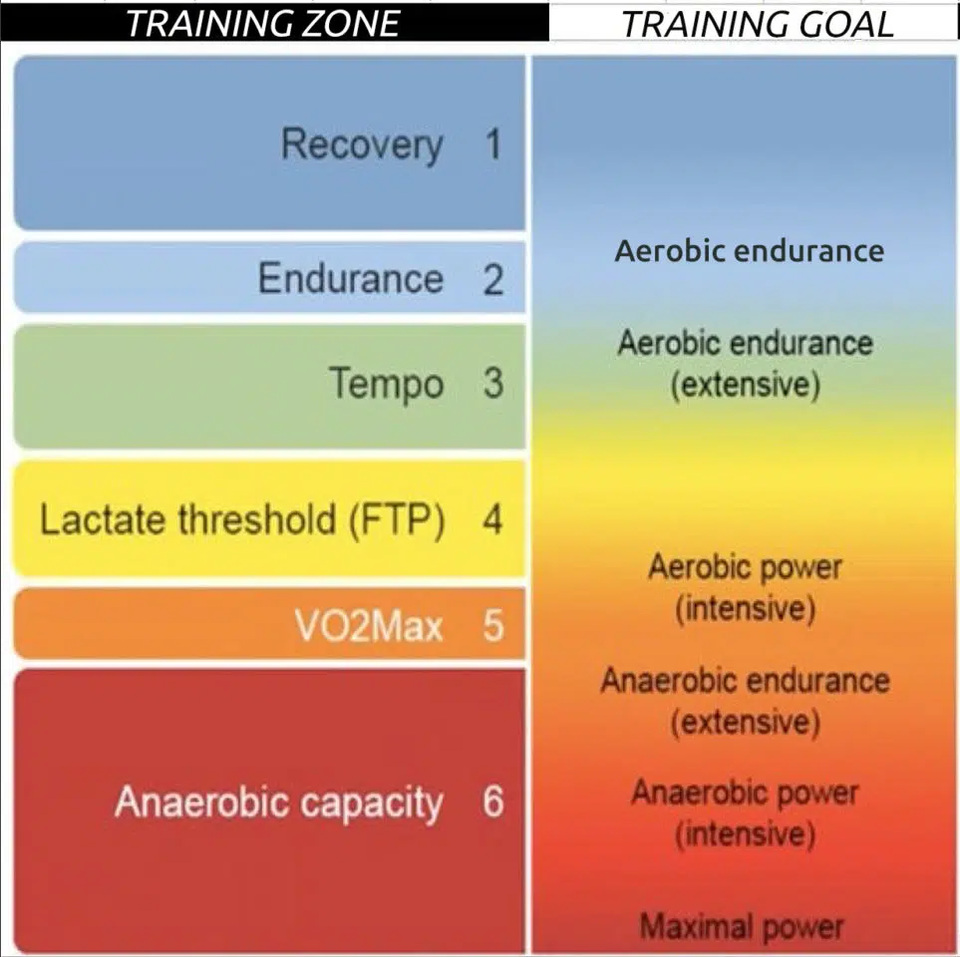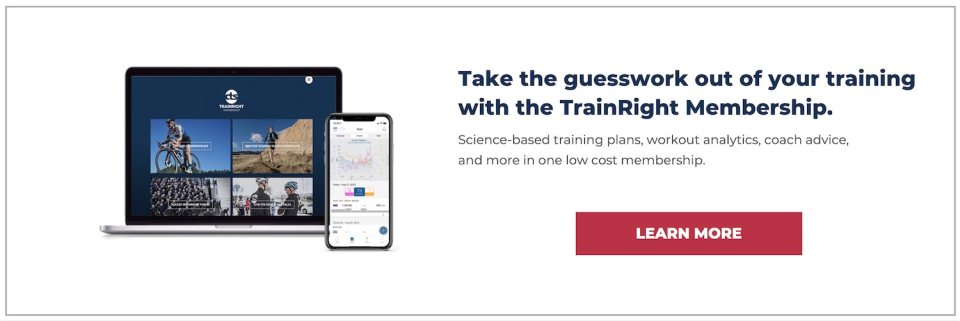How Zone 2 Training Works to Improve Aerobic Endurance and Fat Burning
Low intensity rides are a critical component of any cyclist’s training plan, even plans that also feature high-intensity interval workouts. These easier rides go by a number of different names, including ‘aerobic endurance’, ‘Zone 2’, ‘base miles’, and ‘LSD’ or Long Slow Distance

In CTS terminology, we refer to them as EnduranceMiles. Many athletes – particularly those who are short on training time – devalue this lower intensity level because it feels too easy. But there are some big performance benefits to spending time at a conversational pace.
What is Zone 2 training?
As training intensity increases from very easy to very hard, your body adjusts the mechanisms used to provide fuel for working muscles. For endurance athletes, the most important shift is between the relative contributions of the aerobic system and glycolytic system (sometimes referred to anaerobic system). There are no on/off switches, and the body doesn’t really recognize separate systems. You use energy derived from aerobic and glycolytic metabolism at all times.
At lower intensities you rely more heavily (almost entirely) on aerobic metabolism to provide energy for muscle contractions. Because aerobic metabolism preferentially burns fat, this is when athletes derive the highest percentage of energy from fat stores. Anaerobic glycolysis, which only burns carbohydrate, supplies more energy as exercise intensity increases. As a result, the energy contribution from carbohydrate increases. And at high and very high intensities, the highest percentage of energy is derived from carbohydrate.
Coaches divide training into zones or ranges to stress particular regions of the intensity spectrum. There are different training zone protocols, ranging from three to five to seven, and even nine zones. Below you’ll find a commonly used 6-zone system.

Zone 2 is a low intensity training zone that is almost entirely powered by aerobic metabolism. This means most of the energy expended while riding in Zone 2 comes from the breakdown of fat. It also means the contribution from carbohydrate is low, and there is very little energy coming from anaerobic glycolysis. Because you have essentially unlimited fat stores and only limited carbohydrate stores, this intensity is sustainable for very long periods of time.
Benefits of Zone 2 training
Lower intensity training is so beneficial for endurance athletes because the physiological adaptations that result from time at this intensity lay the foundation for performance at higher intensity levels. Here are some of the adaptations that occur from Zone 2 training:
Increased mitochondrial density
Both fat and carbohydrate are broken down to usable energy inside mitochondria within muscle cells. As you accumulate time in Zone 2, the training stress stimulates development of more and larger mitochondria, particularly in Type 1 (slow twitch) muscle fibers. This allows you to break down more fuel (mostly fat) at a higher rate using aerobic metabolism. Because mitochondria are also where lactate – a biproduct of rapid anaerobic breakdown of carbohydrate – gets reintegrated into aerobic metabolism, greater mitochondrial density also accelerates recovery from hard efforts, thereby increasing power at lactate threshold.
Increased capillarization of muscle tissue
To deliver more oxygen to working muscles, Zone 2 training stimulates the development of more small blood vessels (capillaries).
Increased fat oxidation/sparing of glycogen stores
Through increased mitochondrial density, and increased activity of key enzymes for aerobic metabolism, Zone 2 training increases the amount of work you can do while still relying mostly on fat for fuel. This means you can produce more power before tapping into limited carbohydrate reserves. Or it means you ride longer at a lower power output before depleting carbohydrate stores. However, keep in mind that optimized fat oxidation doesn’t necessarily make you faster (more on that later).
Saddle time and nutrition/hydration testing
There is more to training than energy systems. Longer Zone 2 rides play an important role in acclimating to sitting in the saddle for long periods of time. These longer, low intensity sessions will likely reveal any weaknesses in your bike fit. If your back, shoulders, knees, hips, neck, or hands hurt or go numb during long rides, consider a professional bike fit. However, also recognize you should expect some discomfort – even with the best bike fit – during extremely long rides.
Being on the bike for 2-6 hours (‘long ride’ is relative to fitness level and experience) also presents hydration and nutrition challenges you don’t experience during 60-90 minute interval workouts. These long rides are where you hone your hydration habits and learn what foods work and don’t work for you.
Zone 2, SweetSpot, and Polarized Training
Nomenclature can be one of the more confusing aspects of endurance training. In recent years, two new styles of training have emerged: SweetSpot and Polarized Training. Neither are new concepts, they are new ways to explain training methods that have been used for a long time. Here’s how they relate to Zone 2 or aerobic endurance training:
weetSpot refers to a ‘challenging aerobic intensity’ that is above Zone 2 but well below lactate threshold. It is similar to what has long been referred to as Tempo intensity. As an intensity level, SweetSpot addresses one of the biggest challenges facing amateur athletes: available training time. When used appropriately, SweetSpot accomplishes many of the same physiological adaptations as Zone 2 training, in less time.
Polarized training is the idea that the vast majority of training time should be spent at low intensity (Zone 2), with limited time dedicated to focused high-intensity efforts. This was popularized as an 80%/20% split between low and high intensity, although that varies by athlete and sport specificity. Polarized training is essentially a new way to describe traditional endurance training periodization. It has always been mostly easy with some hard bits. The new nomenclature is useful, however, because it emphasizes that too much time in the middle – neither easy nor hard enough – is detrimental to training progress.
Zone 2 vs. Time Crunched Cyclist Plans
Starting in 2009, I wrote three editions of a book called, “The Time-Crunched Cyclist”, which helped popularize low-volume, high-intensity cycling training. We designed TCC plans for athletes who had 6-8 hours of available training time per week. These athletes didn’t have enough time for traditional periodization, including long Zone 2 rides and months of gradual buildup. In the absence of low-intensity volume, the plans relied on higher-intensity intervals to generate sufficient training stress in 6-8 hours per week.
So, where does TCC methodology fit in with Zone 2, SweetSpot, and Polarized Training? Well, when you look at overall time-in-zone or time-at-intensity, the TCC plans are pretty close to Polarized Training. Even though the focus is on interval workouts, the hard efforts are pretty short and the majority of training time is still at an endurance pace.
CTS Coaches use TCC methodology with athletes when it makes sense or when their training availability requires it. We also utilize longer Zone 2 rides and more traditional periodization plans for athletes who have the available time.
When to focus on Zone 2 training
Aerobic endurance training is an important component of cycling training during all periods of the year. What changes is how much specific training is layered on top of Zone 2 training as cyclists prepare for the demands of their goal events.
Typically, cyclists focus on Zone 2 training early in their annual training plan. During this time, sometimes referred to as ‘base building’, training is more generalized and features fewer hard interval workouts. Because of the lower intensity, cyclists can typically complete back-to-back Zone 2 rides or longer blocks of endurance rides.
The training stress from long Zone 2 rides is significant enough that rest days and recovery rides are still necessary. Don’t mistake the lower intensity to mean a block of Zone 2 training is easy on your body. If anything, it can be harder than you realize. The conversational pace belies the high caloric expenditure and Training Stress Scores from long rides.
Nutrition for Zone 2 Training
Because ‘long ride’ is a relative term, what to eat during a Zone 2 ride will vary by athlete. If you’re out for 2 hours at Zone 2, your fueling strategy will be different than if you are out for 6 hours. For a comprehensive guide, read “Cycling Nutrition: What to Eat and Drink During Bike Rides of Any Length”.
For some general guidelines, you will want to consume exogenous carbohydrate during rides longer than about 75-90 minutes. Even though most of the energy for Zone 2 rides comes from fat, you have sufficient fat stores to draw upon. The recommended carbohydrate intake is traditionally 40-60 grams of carbohydrate per hour, with up to 90 grams per hour for long and strenuous rides.
With the low intensity of Zone 2 rides, hourly caloric expenditure will be relatively low (maybe 500-600 Calories), compared to 800-1000 Calories for racing and high intensity workouts. As a result, most cyclists can perform well while consuming the lower end of the recommended carbohydrate intake range, around 40 grams/hour.
The lower intensity also encourages consumption of more solid and complex foods that contain a mixture of carbohydrate, protein, and fat. The addition of fat and protein slows digestion and keeps you from feeling hungry. You can use simple sugars and concentrated carbohydrate sources like gels and chews during Zone 2 rides, but they are more necessary during high-intensity rides.
The above is a short excerpt from the full CTS TrainRight article, to read the full article, please visit: https://trainright.com/zone-2-training-to-improve-aerobic-endurance-and-fat-burning/
FREE 14 DAY MEMBERSHIP TRIAL
Gran Fondo Guide fans, click on the image above and get TrainRight Membership for a 14 day no obligation trial. TrainRight Membership comes with a 30-day money-back guarantee!
About CTS
As it has since 2000, Carmichael Training Systems leads the endurance coaching industry with proven and innovative products, services, and content. And the results speak for themselves; no other coaching company produces more champions, in such a wide variety of sports and age groups, than CTS.
For more information, please visit: https://trainright.com

